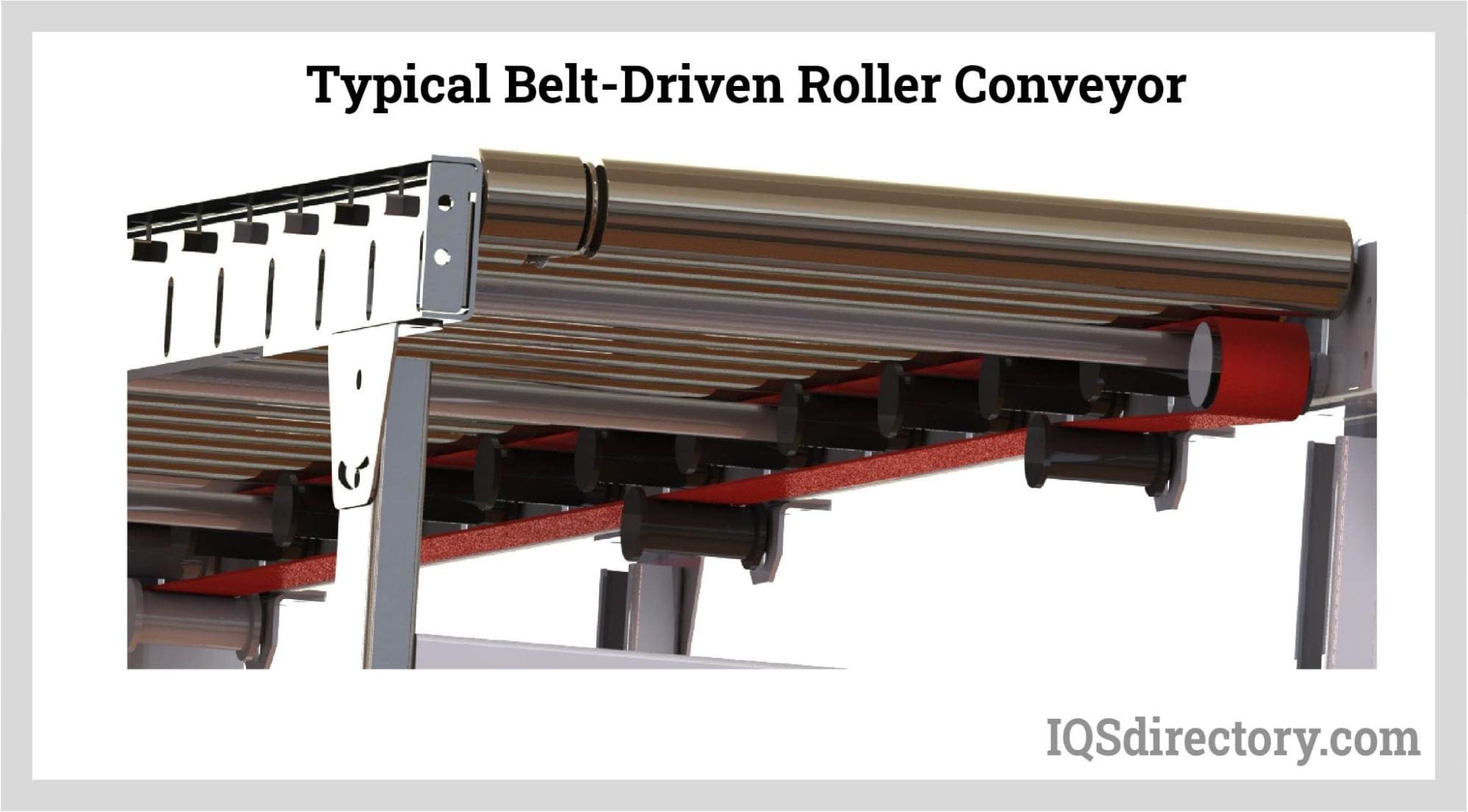As detailed in the article “Types of Roller Conveyors” by IQS Directory, roller conveyors come in various forms, categorized into powered or motor-driven roller conveyors and gravity roller conveyors. Gravity roller conveyors, the simplest form, rely on manual product movement along the rollers, whereas motor-driven roller conveyors encompass different power systems.
Gravity roller conveyors feature a frame with rotating rollers and support legs, utilizing gravity for material transportation, ideal for light to medium-weight loads. These conveyors, typically made of steel, aluminum, or plastic, offer flexibility with options like curves, slide rails, supports, and hanging brackets, enhancing efficiency during loading and unloading processes.
Belt-driven live roller (BDLR) conveyors employ motorized belts to power each roller, allowing control over material movement, including pausing, reversing, and side loading. They are suitable for transporting medium to heavy loads and can facilitate vertical movement and curved paths.
Chain-driven roller conveyors, powered by a chain drive connected to each roller, excel in handling medium to heavy loads and offer bidirectional movement. They find applications in palletizing, load staging, and other heavy-duty tasks.
Line shaft roller conveyors, driven by a rotating shaft connected to the rollers via drive spools and belts, operate quietly and efficiently. They are suitable for accumulation, sorting, and medium to light-duty tasks, provided they are not exposed to harsh conditions.
Zero-pressure roller conveyors, equipped with zones driven by 24-volt DC motors controlled by sensors, prevent product damage by halting movement when zones ahead contain materials.
To delve deeper into May Conveyor’s capabilities and products, click here.
Photo and article with all rights reserved, courtesy of iqsdirectory.com








